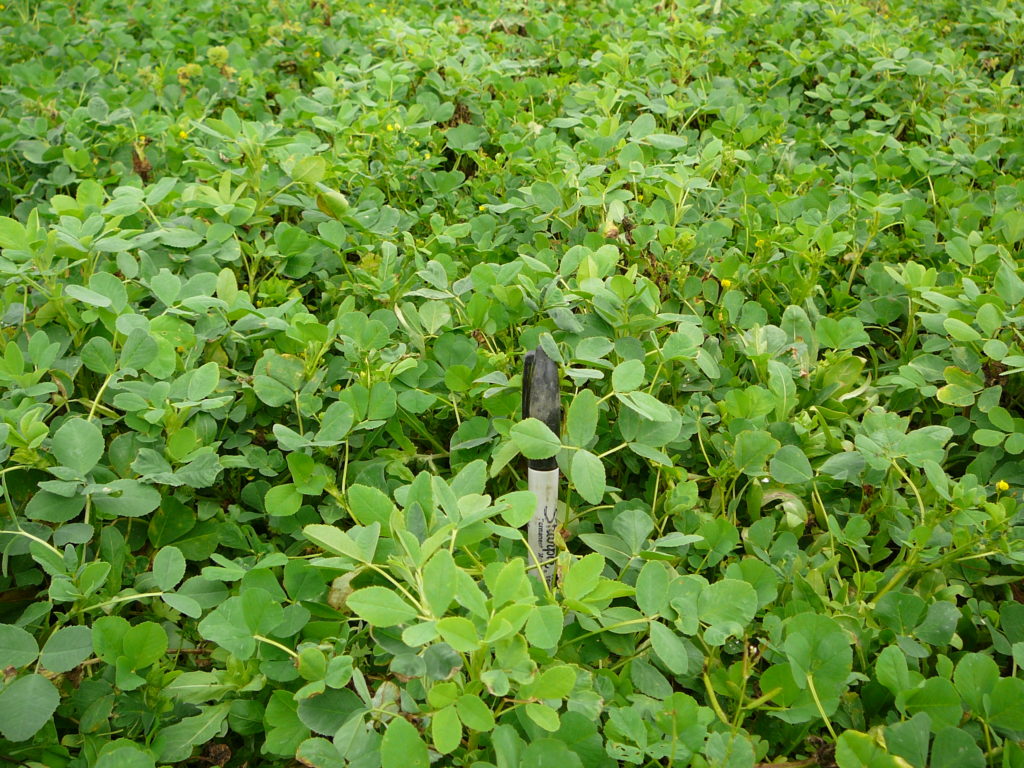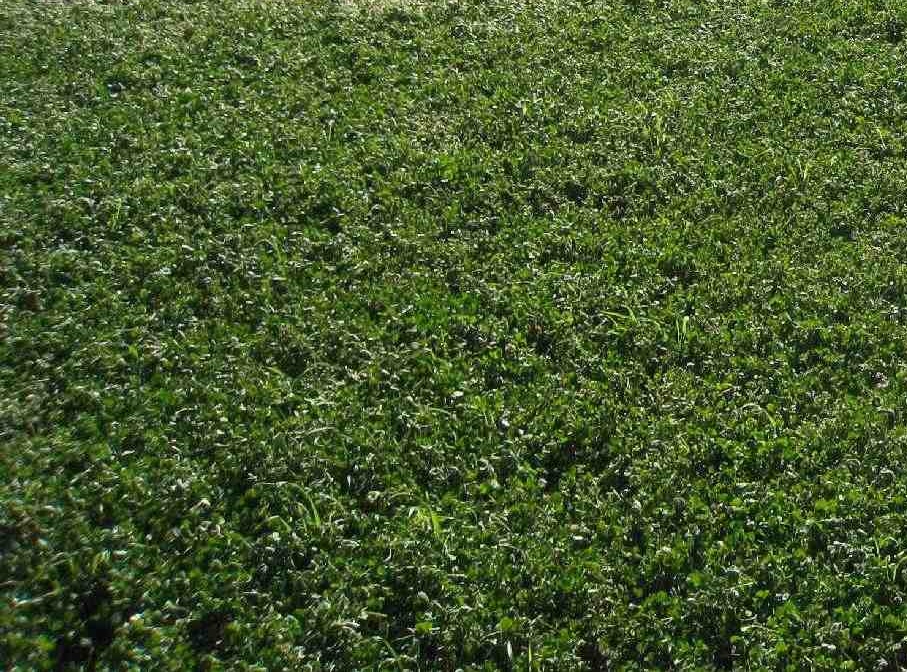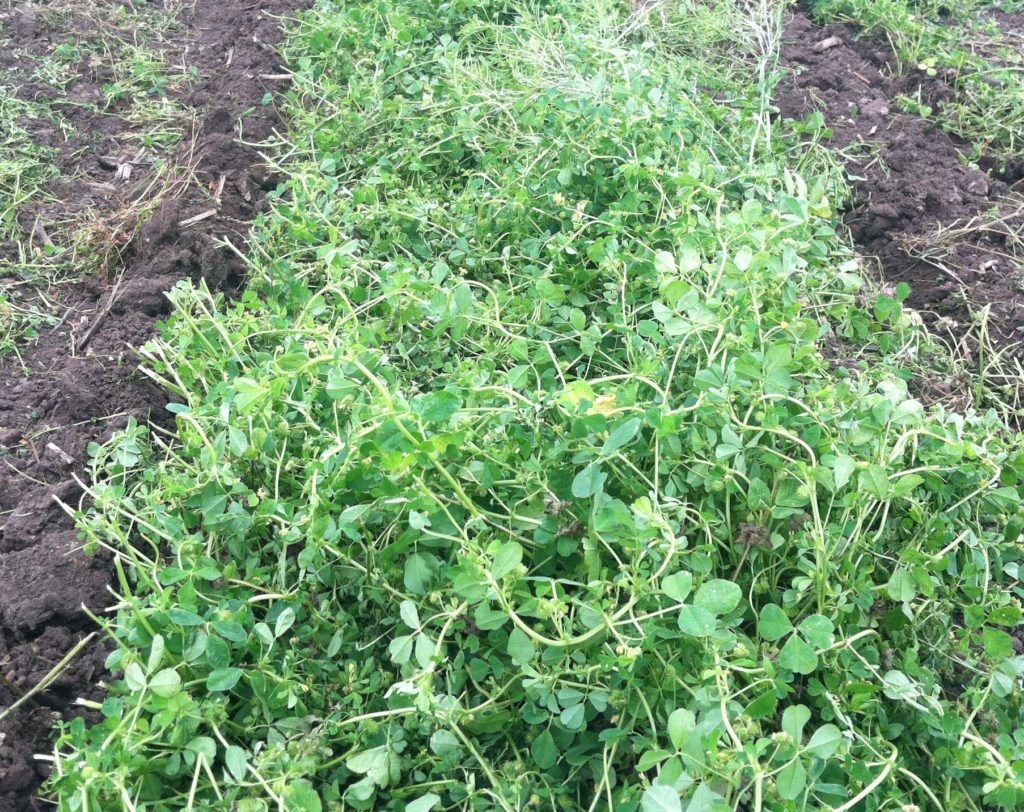
How to Increase Pasture Productivity in Texas with Cool Season Legumes!
Annual Cool-Season Legumes to Enhance Pastures in Texas
By: Jamie L. Foster, Ph.D., Assistant Professor of Forage Agronomy Texas A&M AgriLife Research-Beeville
Cool-season legumes can be incorporated into warm-season grass pastures to increase the amount and quality of forage provided to livestock in winter months.
Why Legumes Benefit Your Pasture

Legumes have a relationship with soil microbes that allows them to use nitrogen from the air we breathe into the legume plant thereby adding nitrogen to the soil. This natural system is less expensive than the application of inorganic nitrogen fertilizers which are energy intensive to manufacture, and will provide a greater crude protein diet to livestock. In addition to enhancing forage quality, cool-season legume increase forage quantity and reduce hay feeding costs.
Our pastures in Texas are warm-season grass based, and examples of common introduced grasses are bermudagrass, bahiagrass, or kleingrass.
Legumes may be planted in the spring and grow in a spatial mixture with warm-season grasses, which requires more artful management than a monoculture forage species. The alternative, discussed here in greater detail, is the planting of cool-season legumes in the fall which grow in a temporal mixture through the winter and very early spring. This warm-season grass and cool-season legume mixture requires management of two monocultures at two separate times.
Planting Cool Season Legumes
Planning ahead is important to successful results when adding cool-season legumes into your haying or grazing system. If chemicals, such as 2,4-D, are used the year prior to establishment, they may remain soil active and prevent the establishment of cool-season legumes. Read labels of other broadleaf herbicides, such as 2,4-D, before use to ensure they have limited or no residual soil activity for the cool-season legume grown. Thoroughly reading the label and understanding the herbicide will provide a greater chance of cool-season legume establishment success.

It is recommended that weeds be controlled in the warm-season grass pasture for a year prior to attempting planting of cool-season legumes.
Additionally, soil tests and knowing your soil type are crucial to selecting the most adapted cool-season legume. The better adapted the forage species, the less management input it will require. Temperature, rainfall, slope, soil texture, soil pH, soil depth, and soil type all factor into the adaptation of forages. To find out more about your soils contact your local NRCS office.
Moisture must be available in the fall and winter months to maximize productivity of cool-season legumes, so like any crop production practice there is some risk involved in diversifying forage production.
Growing annual cool-season legumes may reduce your nitrogen fertilizer application rate and reduce the number of herbicide applications by crowding out early spring weeds. However, legumes have a high phosphorus requirement, meaning that the rate of phosphorus and potassium fertilizers may increase. Soil testing is essential to ensuring efficient fertilizer use.
Warm-season grass should be grazed or hayed to a short stubble height prior to planting. A light disk to 1 inch may be necessary to scratch the surface and ensure seed-to-soil contact. Seed should be inoculated and may be broadcast or drilled into the pasture. Planting 2-years in a row and allowing for reseeding may eliminate the need for future planting and the crop will be self-reseeding. If grazing of the cool-season legume is not managed properly or hay not cut timely, shading of the warm-season pasture may occur.
Choosing the Right Cool Season Legume

So, which cool-season legume is best for your region and specific soil type? In the alkaline and warmer region of south Texas, medics (burr and little burr) and sweetclover will do well in clay soils, whereas, caley pea, rose clover, or vetch are options for clay to sandy soil types. In the cooler and wetter east Texas region, arrowleaf and crimson are adapted to sandy soils; red clover is most adapted to clay soils, whereas, rose clover and vetch are options for clay to sandy soil types. Both ball and white clovers require very moist sandy to clay soils, such as river bottoms and other areas where moisture collects.
Planting date will vary by region due to temperature and moisture variation. Additional information can be obtained from your local County Extension Agent or http://foragefax.tamu.edu. In summary, annual cool-season legumes can diversify your forage system and may be economical and highly beneficial to livestock or hay operations.

Dr. Foster is an Assistant Professor of Forage Agronomy at the Texas A&M AgriLife Research Station in Beeville and on faculty with the Department of Soil and Crop Sciences at Texas A&M University. She is from Cedar Park, Texas, and completed degrees at Tarleton State University, Texas A&M University, and the University of Florida. Her research focus is the integration of legumes into agricultural systems and the system impact of inclusion of legumes. jlfoster@ag.tamu.edu
